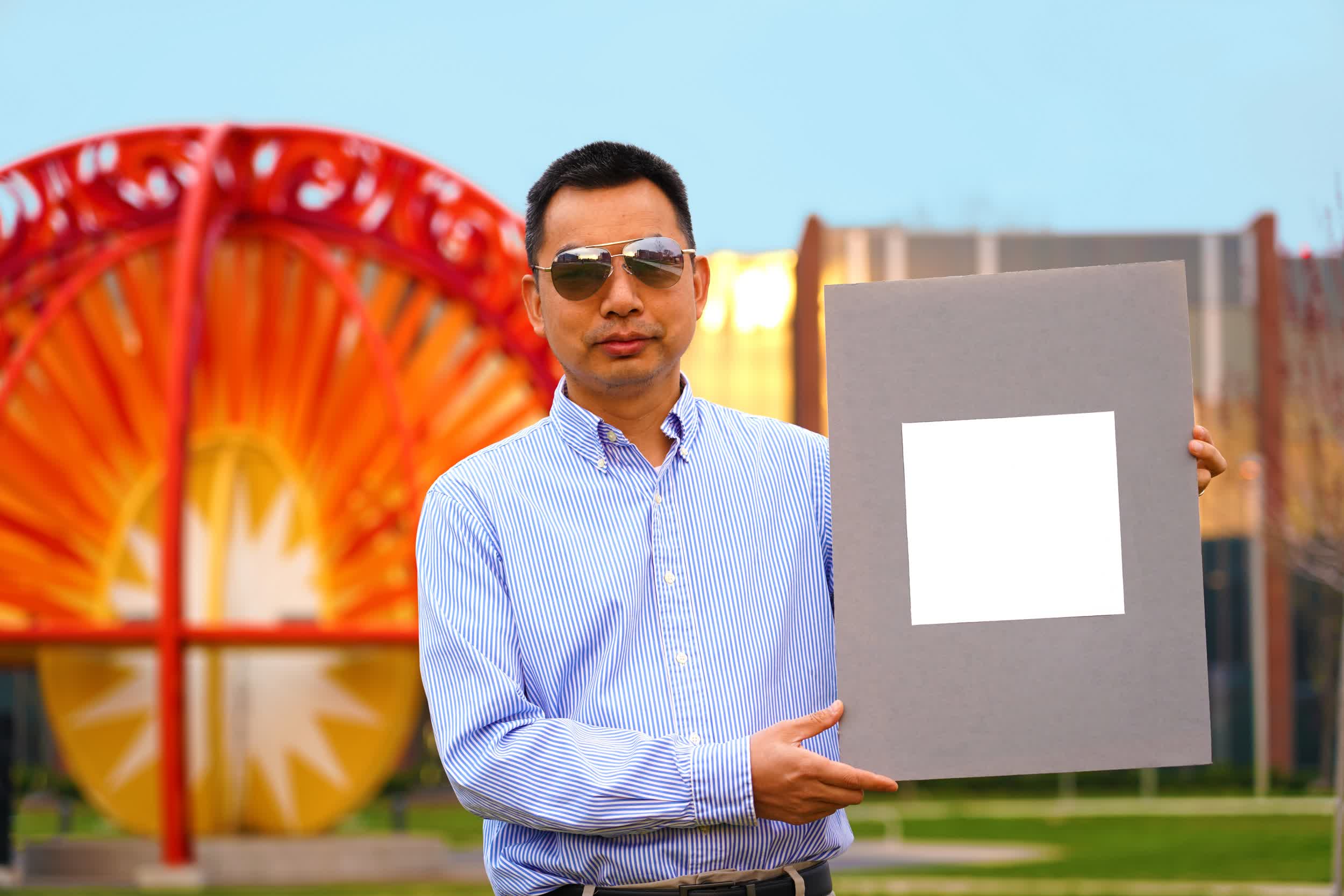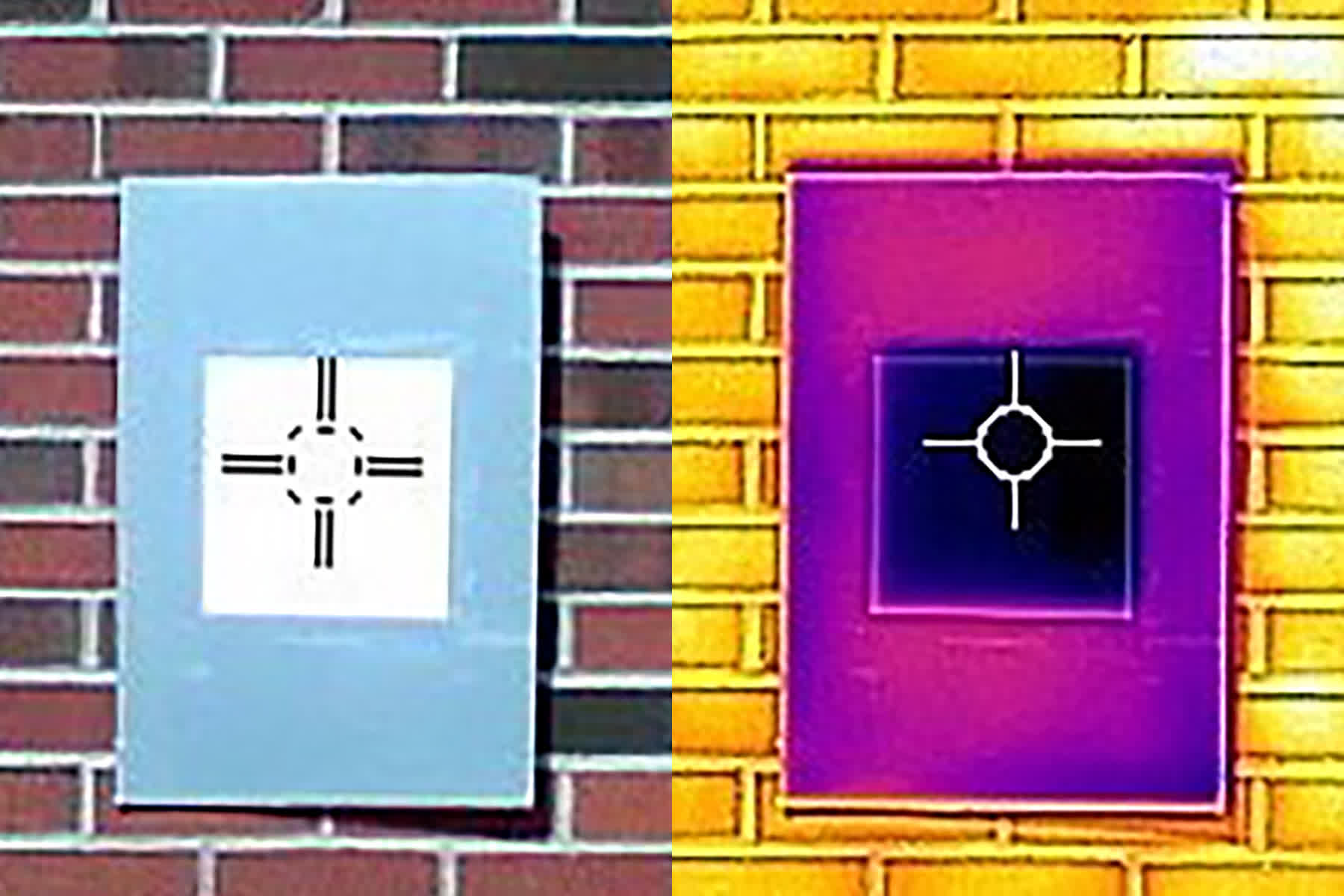In a nutshell: Engineers at Purdue University have developed what’s being described as the whitest paint ever created. The new paint, which outperforms a formulation crafted late last year by the same team, is believed to be the closest equivalent of the blackest black, a material known as Vantablack.

Last year’s white paint was capable of reflecting up to 95.5 percent of sunlight but the new variant pushes that figure to 98.1 percent.
The paint is comprised of a high concentration of barium sulfate, a compound commonly used in photo paper and various cosmetics. The team also discovered that using barium sulfate particles of different size allows the paint to scatter more of the light spectrum from the sun, contributing to its high reflectance.
Bragging rights aren’t the only thing at stake here. The paint, which has been in development for six years, is also very good at keeping surfaces cool.

(An infrared camera shows how a sample of the whitest white paint (the dark purple square in the middle) actually cools the board below ambient temperature, something that not even commercial “heat rejecting” paints do.)
In testing outdoors, the team’s paint kept surfaces 19 degrees Fahrenheit cooler than their ambient surroundings at night. Under strong sunlight during mid-day hours, surfaces were eight degrees cooler than their surroundings. And when testing in a wintery environment with an ambient temperature of 43 F, the paint still managed to lower the surface temperature by 18 F.
The researchers have filed patent applications for the material and appear set to commercialize it in the future.
https://www.techspot.com/news/89346-purdue-whitest-white-paint-may-closest-equivalent-blackest.html